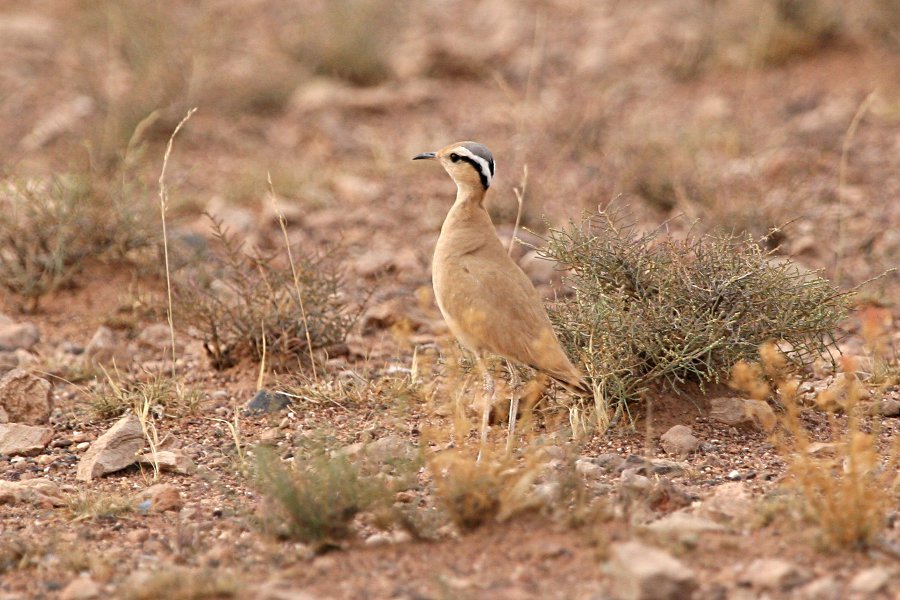And so, plover-lovers, we finally come to the end of my wade through waders, peek at peeps, my stint writing about stints, a course about coursers, my dowitcher-twitches and my stories of shories. Perhaps I should just get the f— on with it…
117 Common Sandpiper Actitis hypoleucos
We do get them here in SA — I’ve had one or two at places like Laratinga Wetlands but they certainly do not live up to their name in these parts. However they are a widespread old-world species and as well as Australia and Britain I have seen them in the far east. This photo, like my earlier pic of Pin-tailed Snipe, was taken at the King’s Project in Thailand.
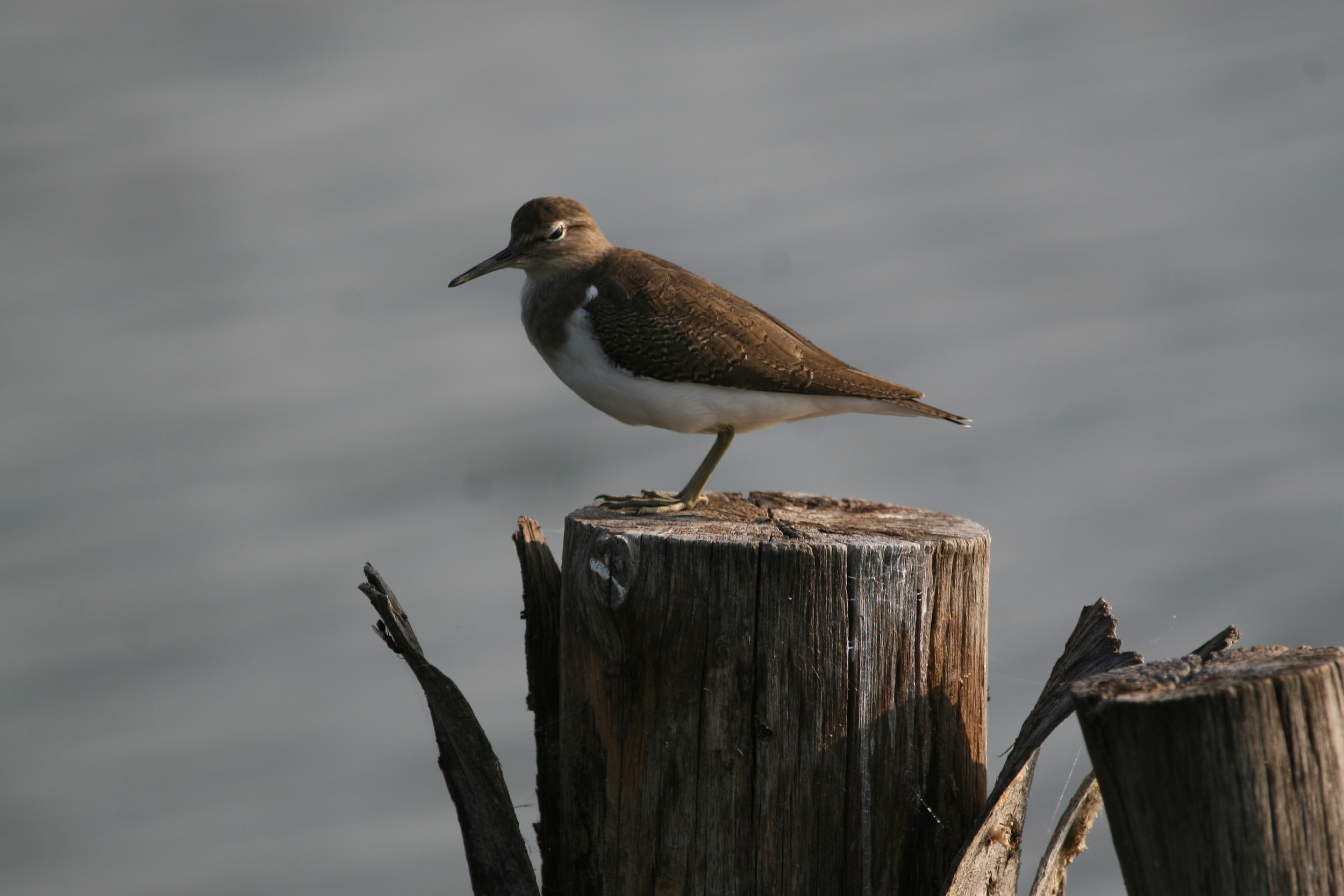
118 Spotted Sandpiper Actitis macularius
My first Spotted Sandpiper came on a red-letter British birding day, and should have been my 299th species in Britain in spring of 2007. Three hundred used to be the lower limit for being taken seriously as a birder/twitcher in Britain, but by the time I reached that milestone, the advent of pagers and the internet meant 400 was an entirely gettable number after just a couple of years birding if you were hardcore enough. 400 doesn’t make you a good birder though, just a keen (mad) one, and I went to many twitches where people with much longer lists than me seemed to have much worse skills (despite my own birding ability being somewhat limited). Anyway, 300 seemed like a good number for me to get before graduating to the ranks of world birders (which I did the year after with a trip to PNG). I digress.
Early that spring there were there were a bunch of rarities hanging about in Cornwall that, if I cleaned up, could get me to the magic 300. So I bagged a pass out from home and headed down to Devon to meet up with Steve on Friday evening. On my way down I called in at Weston-super-Mare where I connected with a Green-winged Teal on the Axe Estuary. That was 296. Early the next morning Steve and I headed for Stepper Point near Padstow. After an hour of scanning across the Camel Estuary to Polzeath and all the way up the river hoping for a special raptor, we were on the verge of trying another spot when another birder quietly asked if the pale lump in his scope was a Gyrfalcon. We struggled to get excited because it really did just look like a rock, until all of a sudden it turned around, stretched its long pointed powerful wings and powered off chasing gulls up the river. 297! We then set Steve’s satnav for an unremarkable street in the outskirts of Newquay, where Steve managed to track down a dull, elusive vagrant on call and I was able to add Dusky Warbler as 298. Now we pointed the car to Hayle Estuary where a White-billed Diver, a bird we both needed, had been showing very well. On the way we stopped on the Hayle Causeway where Spotted Sandpiper (vagrant North American cousin of Common) had been hanging about. This was supposed to be bird number 299, with the cracking Diver to be 300, but do you think the Sandpiper would show? Eventually I grew impatient and I could sense Steve’s eagerness to ditch the plan so we could enjoy the real reason we’d driven all this way, especially while good light held. So we drove on for a mile, spent some quality time with the diver, and then returned an hour or two later and finally the Spotted Sand was showing, #300!
The bird pictured is not that one though. This digiscoped photo of my life-bird was taken in upstate New York during my weekend birding while I was visiting colleagues at GE Schenectady, 2005. Sadly it had already assumed winter plumage by the time I saw it, so no longer had the spotted belly that gives it its name.
Oh, and in case you were wondering, I was on 319 when we left the UK in 2012.
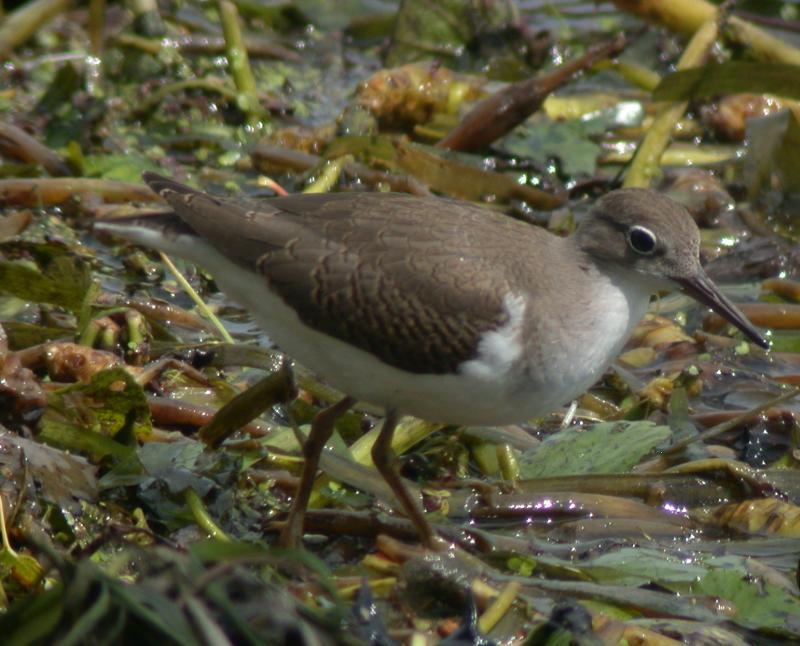
119 Green Sandpiper Tringa ochropus
So now we have to plough through the family Tringa, another large group that are somehow not as inspiring as some others, even though there are some quite smart and somewhat interesting members. Green Sandpiper is a bird I saw fairly early on in my British birding career, in 1997. After my inaugural British birding trip to Norfolk with Steve and Penny, in the spring, I followed this up with trip to Rutland Water with the same couple for Birdfair. A particular and memorable highlight was seeing David Attenborough speak about the forthcoming blockbuster Life of Birds, I also ticked off Green Sandpiper. However my clearest memory of one comes from Farmoor, where I remember finding one at the Shrike Meadow Hide, the only time I ever saw anything decent from that particular spot. No image, sadly.
120 Solitary Sandpiper Tringa solitaria
No photos of what, at the time, was a list-padder in a trip to Venezuela. Nowadays I would pay more attention because I have only ever seen one, but in 2012 with the prospect of Antbirds, Hummingbirds, Tanagers, Toucans, and Cotingas, a fairly widespread wader was not high on target list. My notes say we saw two on the 11th January. This was the same day we had an outstanding encounter with a Harpy Eagle which might explain why Solitary Sandpiper failed to make an impression.
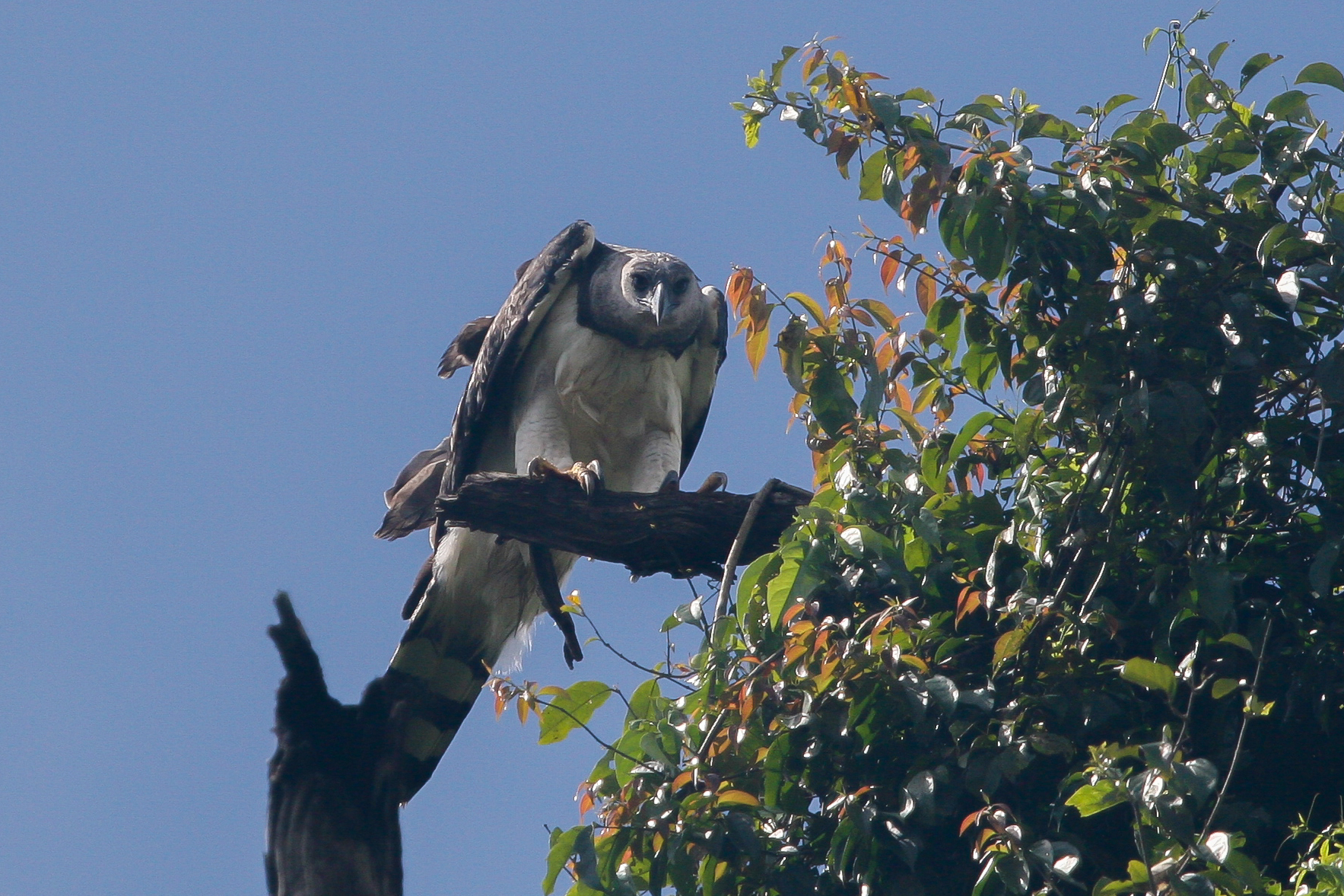
121 Grey-tailed Tattler Tringa brevipes
It seems as though my first GTT was on honeymoon on Brampton Island (Whitsundays) in 1997, but I have no memory of it, just a tick in a small guide to the birds of the island. Maybe I had other things on my mind… ;-). After that the next record is one I do remember, from 2008 in Papua New Guinea. After multiple delays getting from Singapore to Port Moresby, and thence to Alotau in the far south east of the country, we finally arrived at the very lovely Napatana Lodge on the outskirts of the town. Whereupon, it pissed down for 4 days straight. Unable to make the crossing to Fergusson Island for our first main targets of the trip, we waited around in the lodge seeing some nice, but mostly common, Australasian species. During one break in the rain we ventured the 100m or so to the water’s edge where a Grey-tailed Tattler was (presumably) tattling. Subsequently I have also landed it on my Aus and SA lists with three birds at Port Clinton, about 90min north of Adelaide. Here’s two of them:
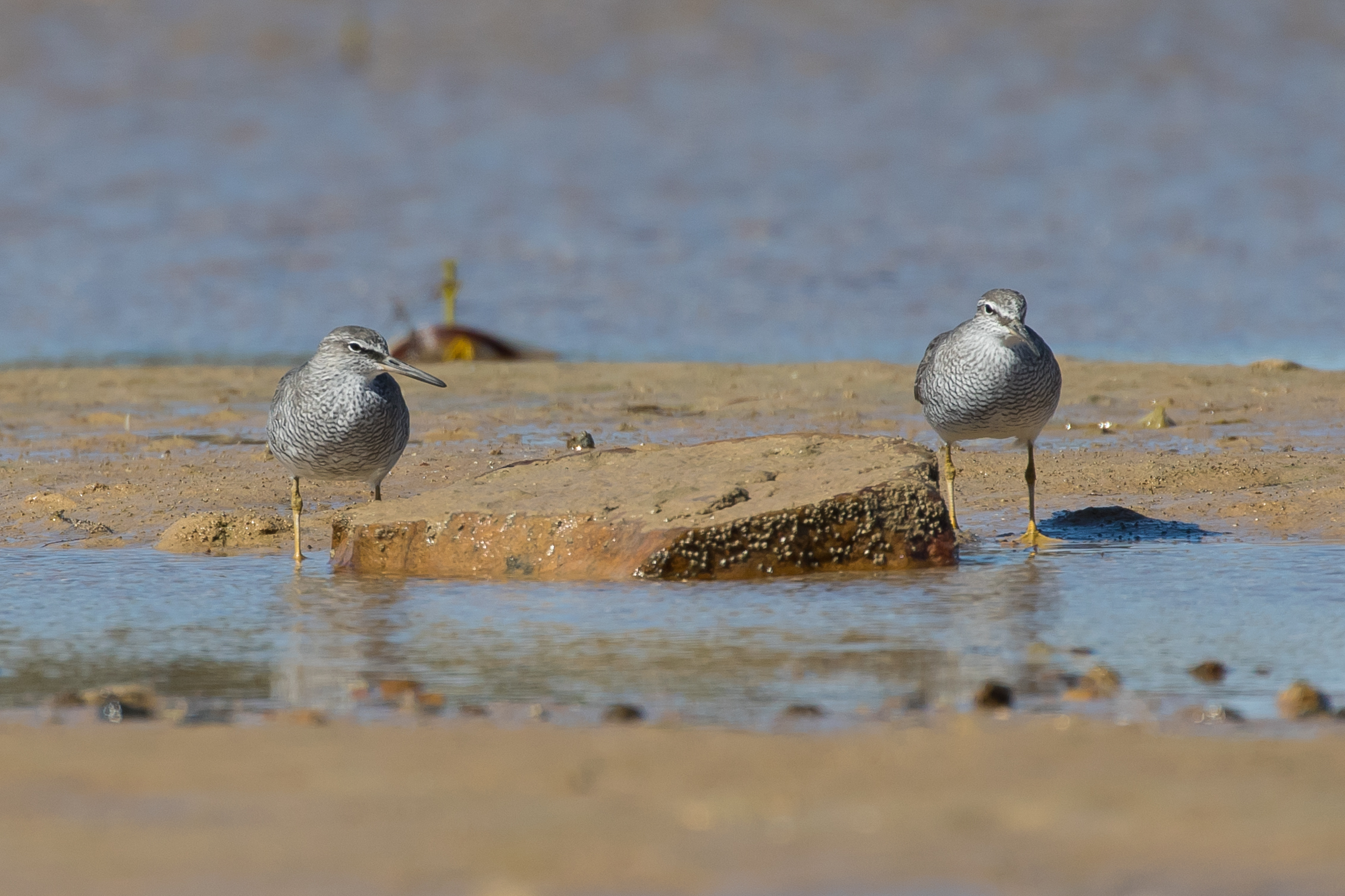
122 Lesser Yellowlegs Tringa flavipes
LYL is a North American wader that I saw first on my GE visit to Schenectady back in 2005. I have seen it subsequently in Britain when one showed up on Port Meadow, my old stomping ground, in 2010. The picture is of my life bird in upstate New York 2005 which explains its shiteness, but doesn’t explain why I have failed to get anything better in the intervening 15 years.
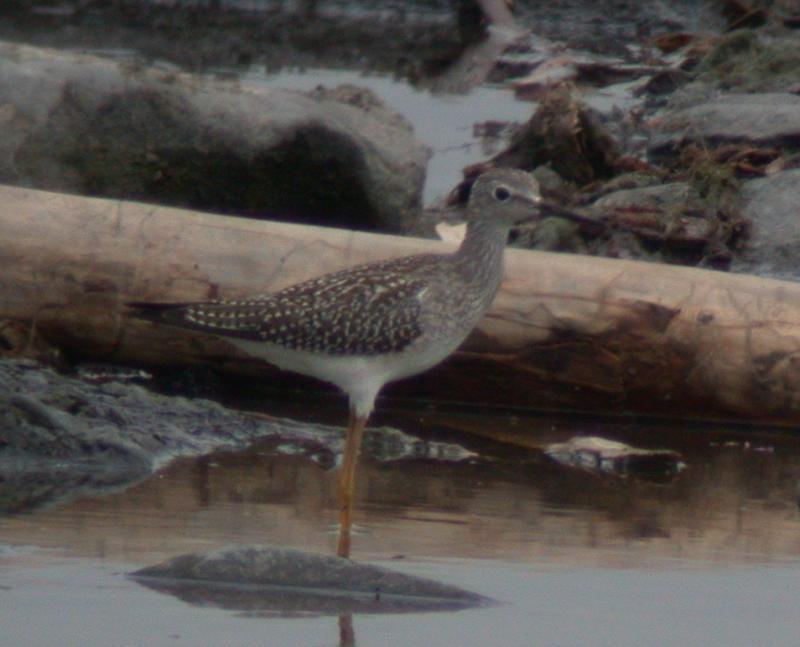
123 Willet Tringa semipalmata
My first Willet, another American Tringa was, near Galveston on my brief stopover in Texas in 2000 (see also Dowitchers and Semi-palmated Plover), when I was still taking film photos. It’s fairly common and widespread so I’ve seen it on many of my North American conference trips. My best experience by far was on my fab day-trip to the Sierra Valley where we had a few breeding pairs along the Harriet-Heriot Rd, with the flooded meadows positively humming with breeding birds.
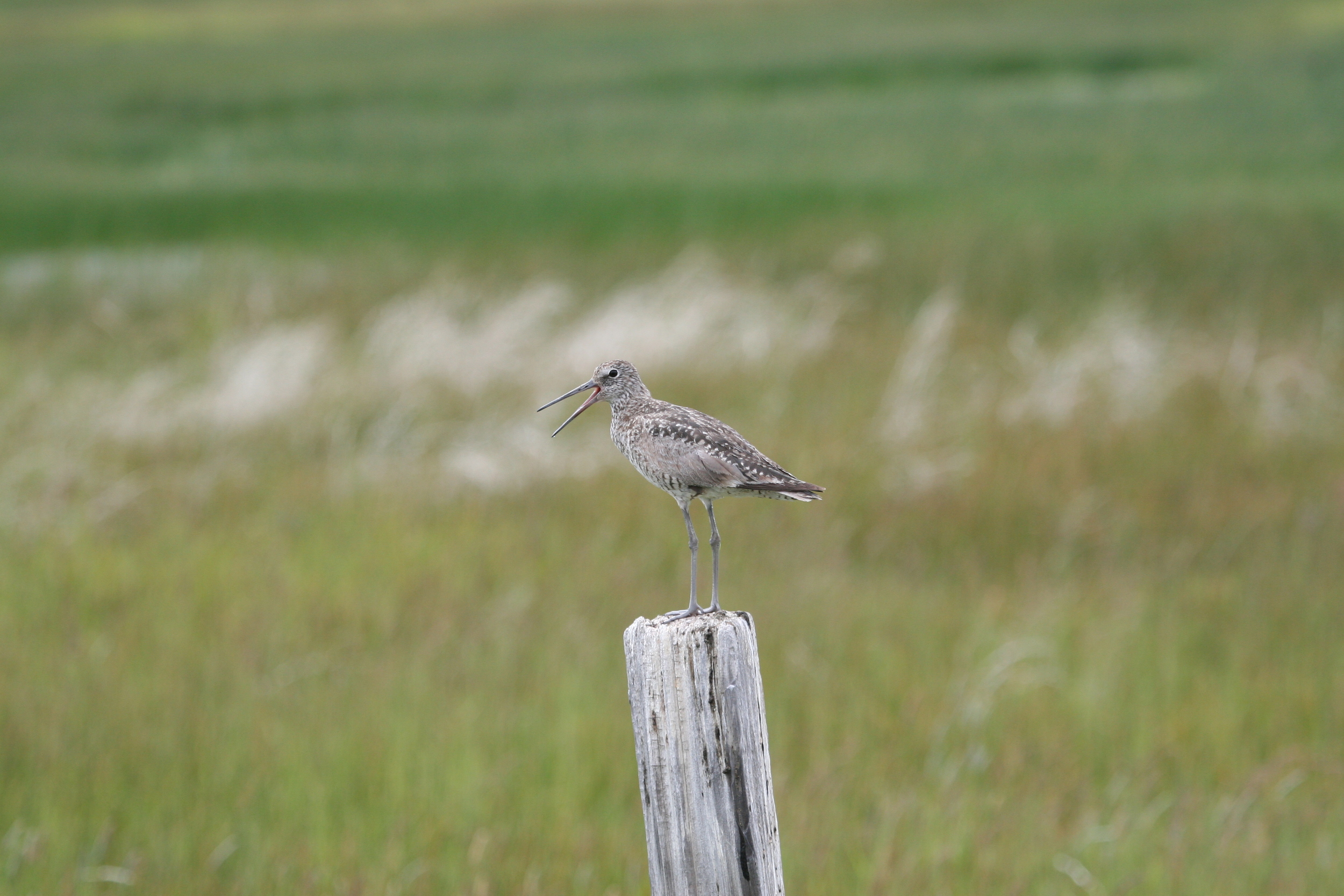
124 Common Redshank Tringa tetanus
As I have noted before, birds labelled Common are not always so. Common Redshank was not scarce in Oxfordshire but it’s breeding numbers were (and I guess, still are) declining. I used to see them fairly regularly at Farmoor and Port Meadow, but to add some spice, here is picture from the Tibetan Plateau. Tom Bedford and I had just arrived, for a 4 days stay on the plateau at 3500m above sea level, and we were grilling a lovely summer-plumaged Citrine Wagtail when this x-rated performance drew our attention for a moment.
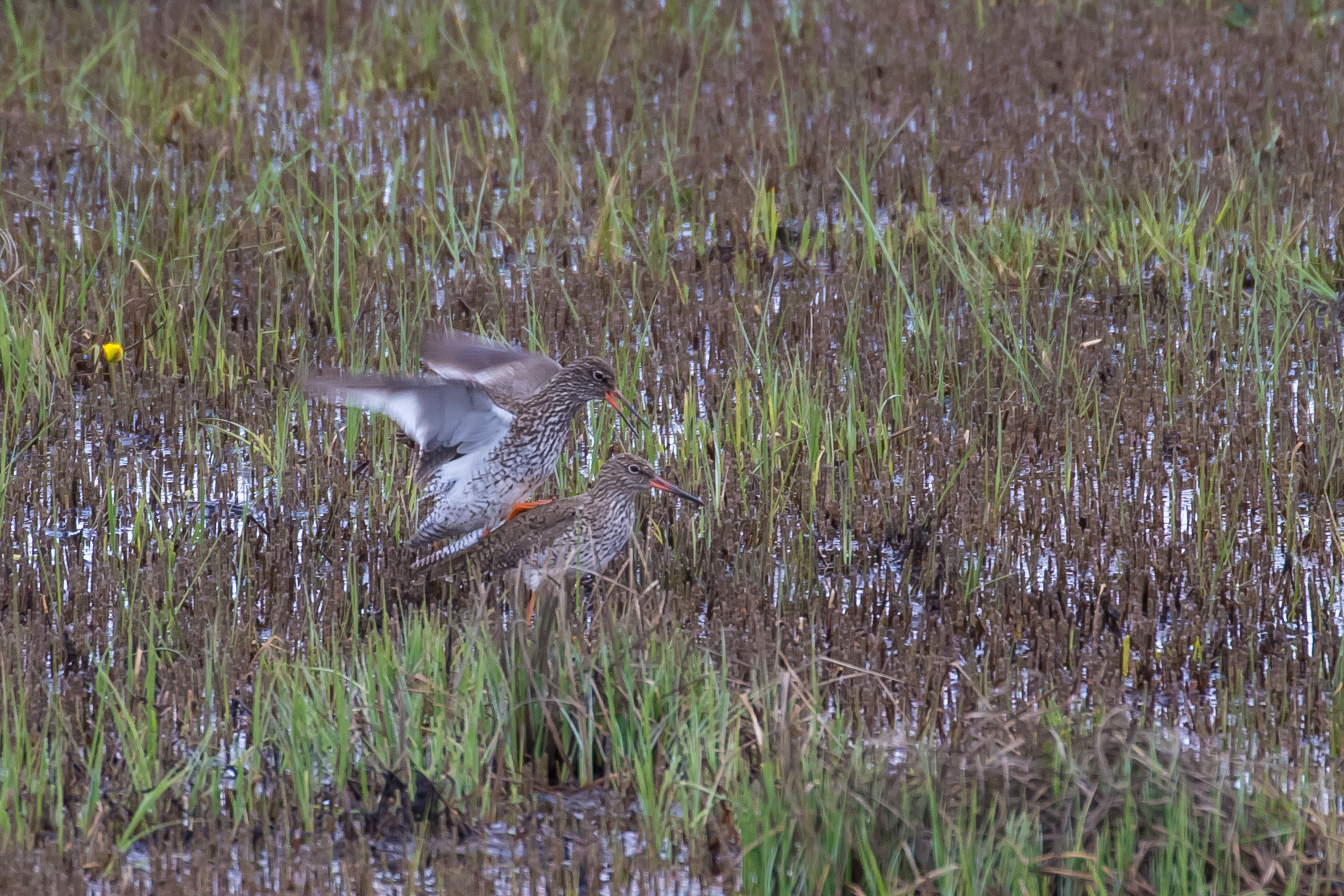
125 Marsh Sandpiper Tringa stagnatilis
A beautiful, elegant wader – probably my favourite of the family – like a dainty Greenshank. I have seen it in various places, but it’s not on my British list which means my first must’ve been in Cyprus at Phassouri Reedbed (see Spur-winged Plover). They are not rare, but scarce enough along the coasts that it’s a good day if you see one in SA. We’ve even picked them up on twitchathons, a good bird to get when you’re in a rush. Like the stint I have seen it at Tolderol south of Adelaide, and last year (2019) there was a bonanza, with more than a dozen present on repeated visits. I took this picture at Tolderol and blogged about Tolderol here.
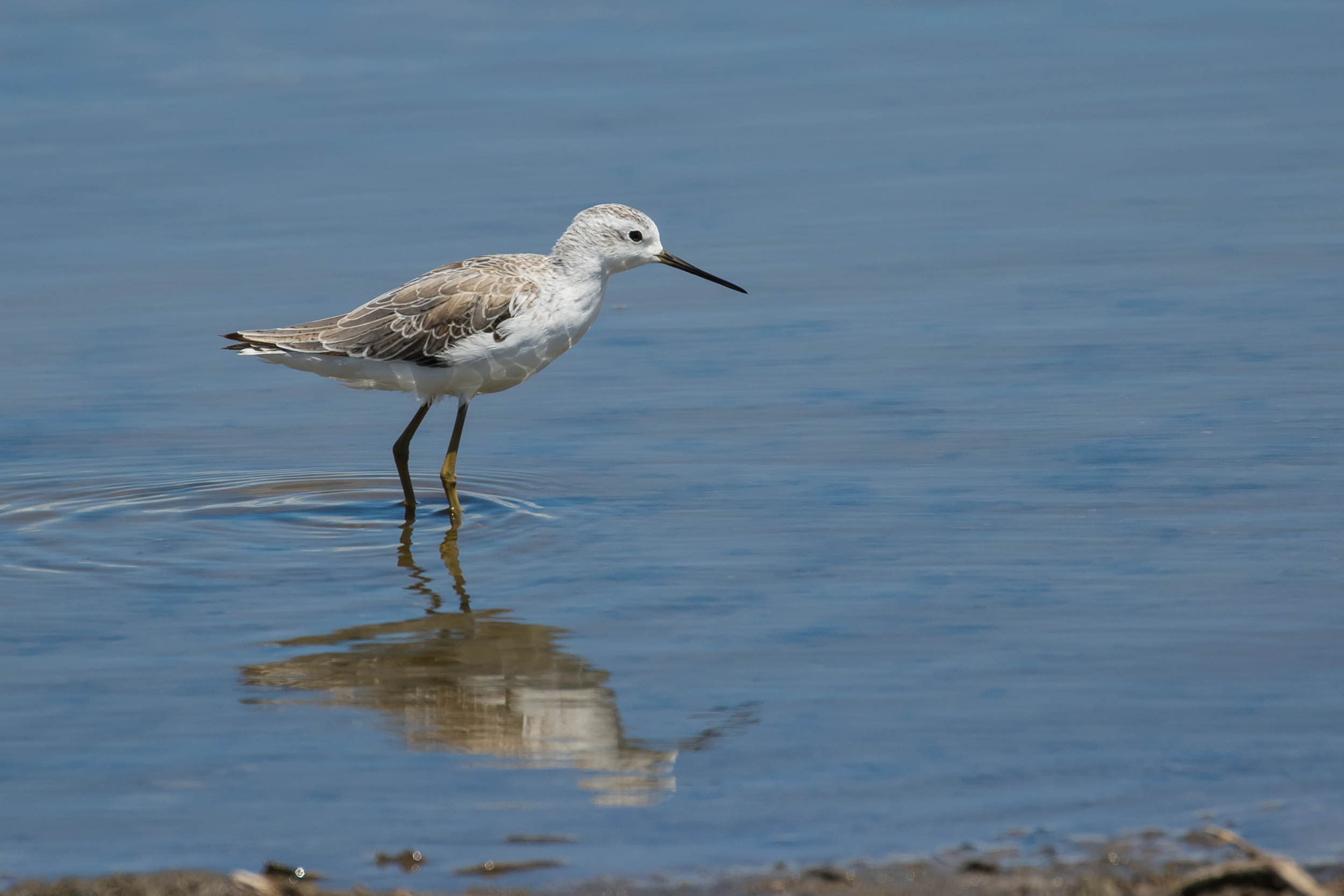
126 Wood Sandpiper Tringa glareola
Wood Sand’ was always a good one to find at Farmoor. Smart and distinctive, there were never more than couple per annum. Now of course, I see them commonly on freshwater marshes around Adelaide. This photo, though, is from Thailand in 2010.
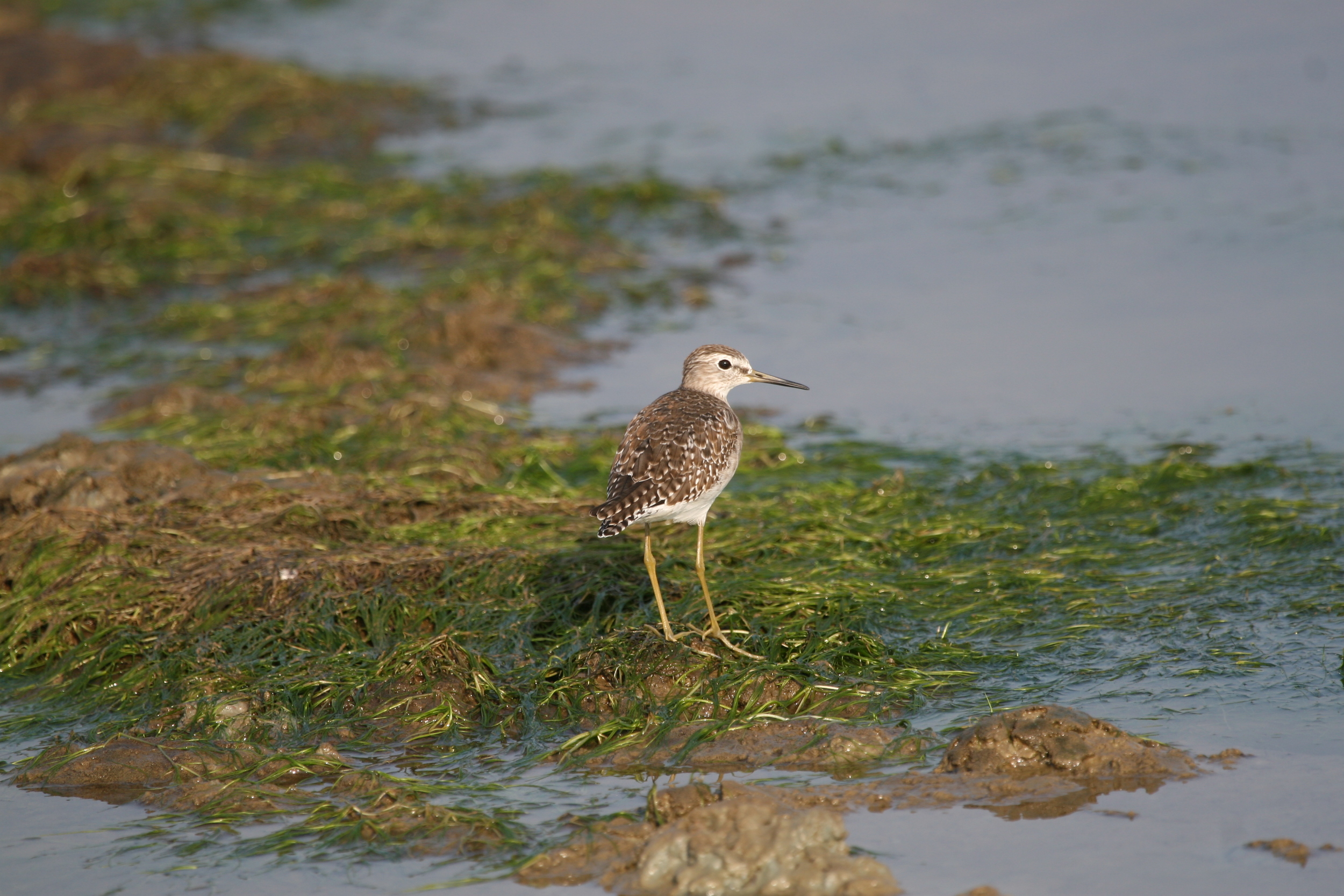
127 Spotted Redshank Tringa erythropus
My records show that I ticked this on my British list at Slimbridge, though I failed to make any other notes and can’t remember when this was. My best experience was in Austria in 2006. After the European Conference on Conputer Vision in Graz, I rented a car and spent two days and one night around Neusiedlersee, a steppe lake that is in Austria but is basically at the western edge of the great Hungarian Plain (report here). Unlike the typical alpine scenery one might expect in Austria, Neusiedlersee is a very shallow, wide lake, with vineyards (Austria’s most famous grape, the Gruner Vetliner is grown here), wet meadows, and steppe surrounding. Great Bustards, one of my favourite birds, breed here (I saw them lekking), Eastern Imperial Eagle are occasionally seen and I connected with some fantastic warblers including Marsh Warbler and the fabulous locustella, River Warbler.
At one of the smaller lakes that dot the eastern edge, Martenhoferlaken, there was a bittern booming even at 1430, early afternoon, and here we found a pair of breeding plumage Spotted Redshank. I have no image sadly, so it’s worth noting that in breeding plumage SRS is a smart dark charcoal, white spots on its back, smart white eye-ring and long, elegant two-toned red-and-black bill, and of course those long red shanks. If I had a photo it might pip Marsh Sand for my favourite Tringa; I doubt it would be controversial to state that in breeding plumage it is by some distance the smartest of the family.
My picture, unfortunately, is of non-breeding birds, taken at Ras-al-Khor, a wetland north of downtown Dubai, in 2013.
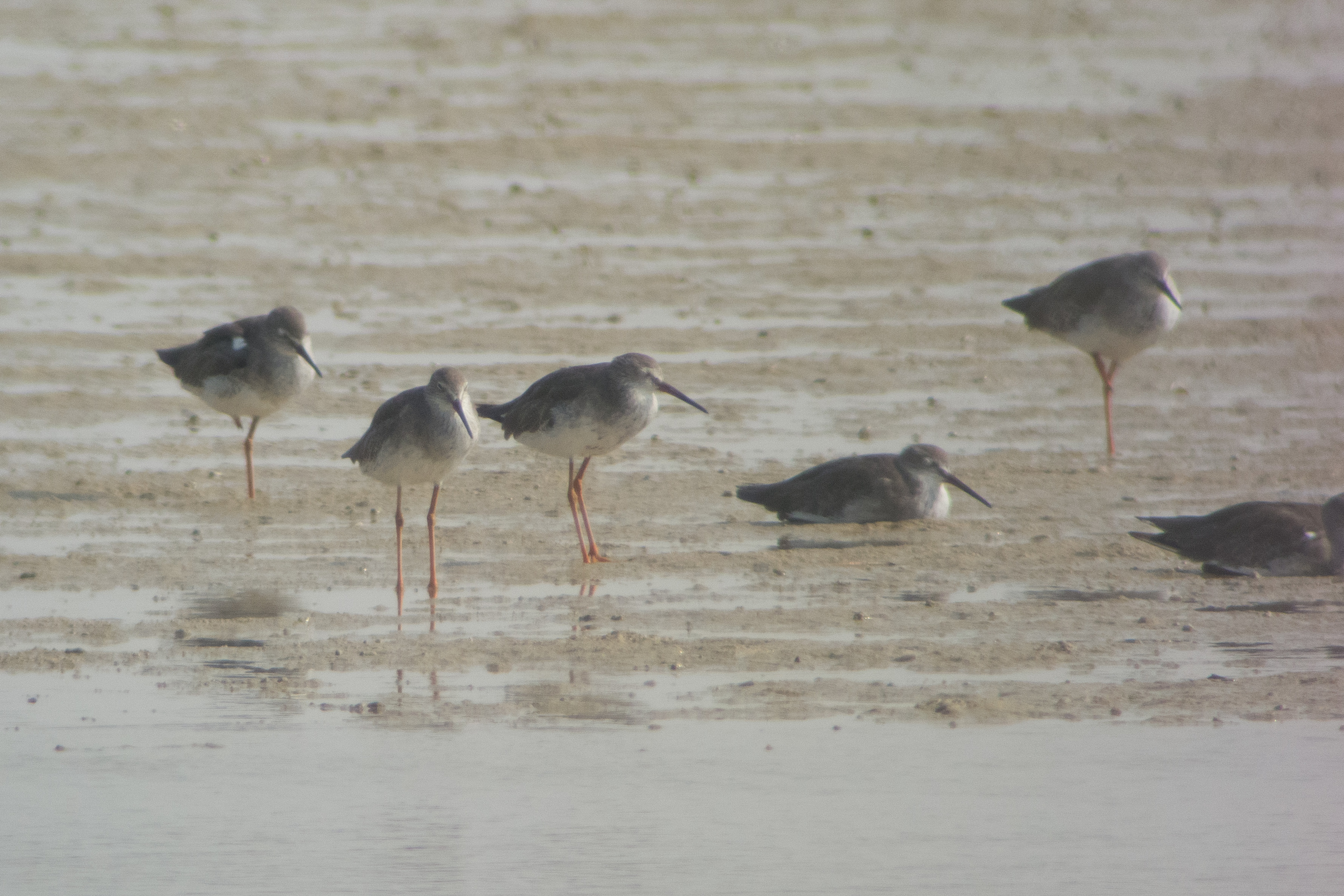
128 Common Greenshank Tringa nebularia
Greenshanks are nice waders, but meh! There’s not even a specially interest back-story, so here’s a picture from the Coorong (Salt Creek) in South Australia of one auditioning for the Ministry of Silly Walks, and we’ll keep on moving…
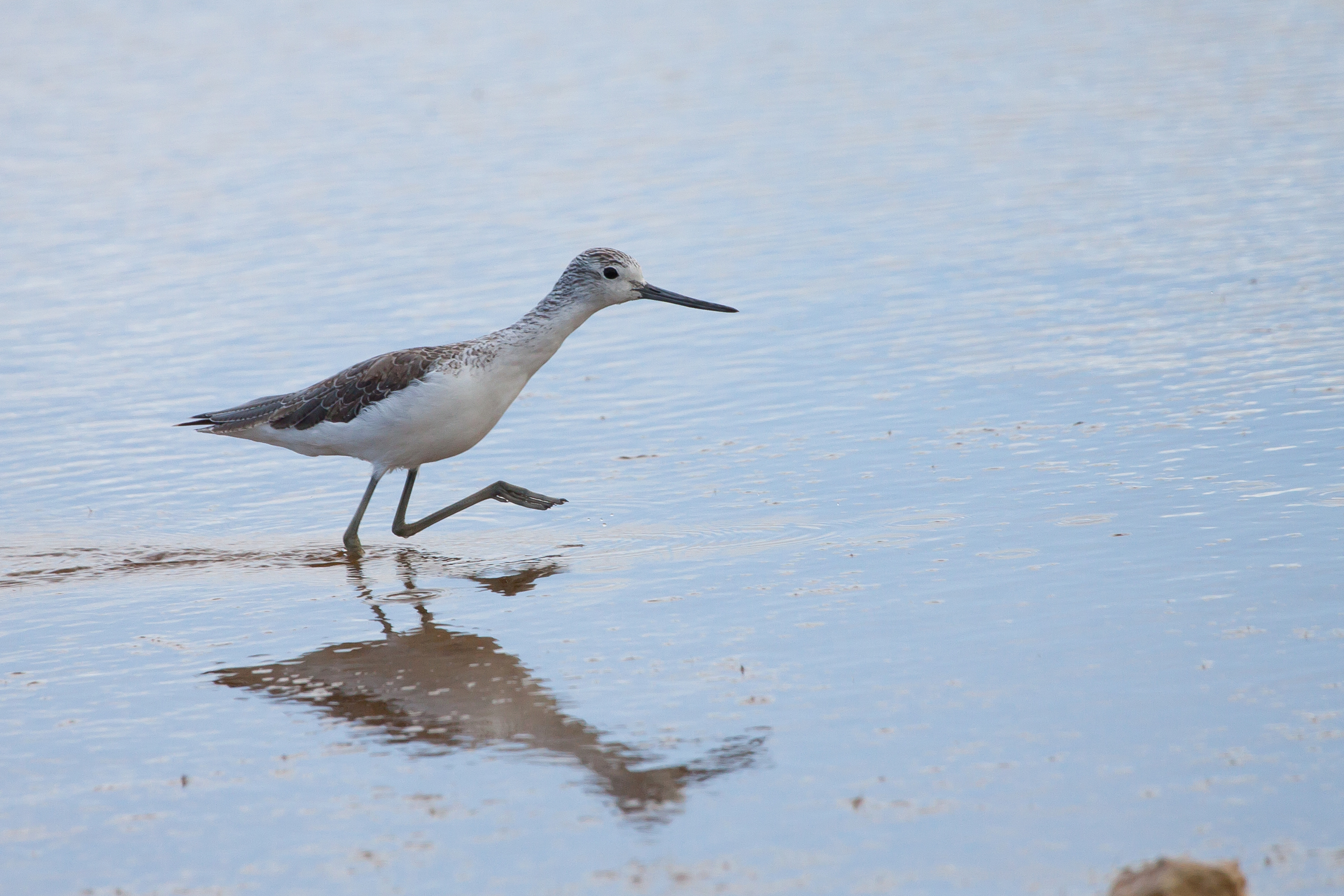
129 Nordmann’s Greenshank Tringa guttifer
Nordmann’s Greenshank, although very similar in appearance to Common Greenshank, is critically endangered, and so has the allure of the ultra-rare. Both of my trips to the Gulf of Thailand have resulted in sightings, though both were very distant. If fact after my 2010 trip I didn’t even realise that I had an image of one until I reviewed various shots I had taken of mixed flocks of waders, variously put up by paddy-field workers and raptors, and discovered several Nordmann’s with Red Knots, Curlew Sandpipers, PGP, Ba-T Godwits and possibly others.
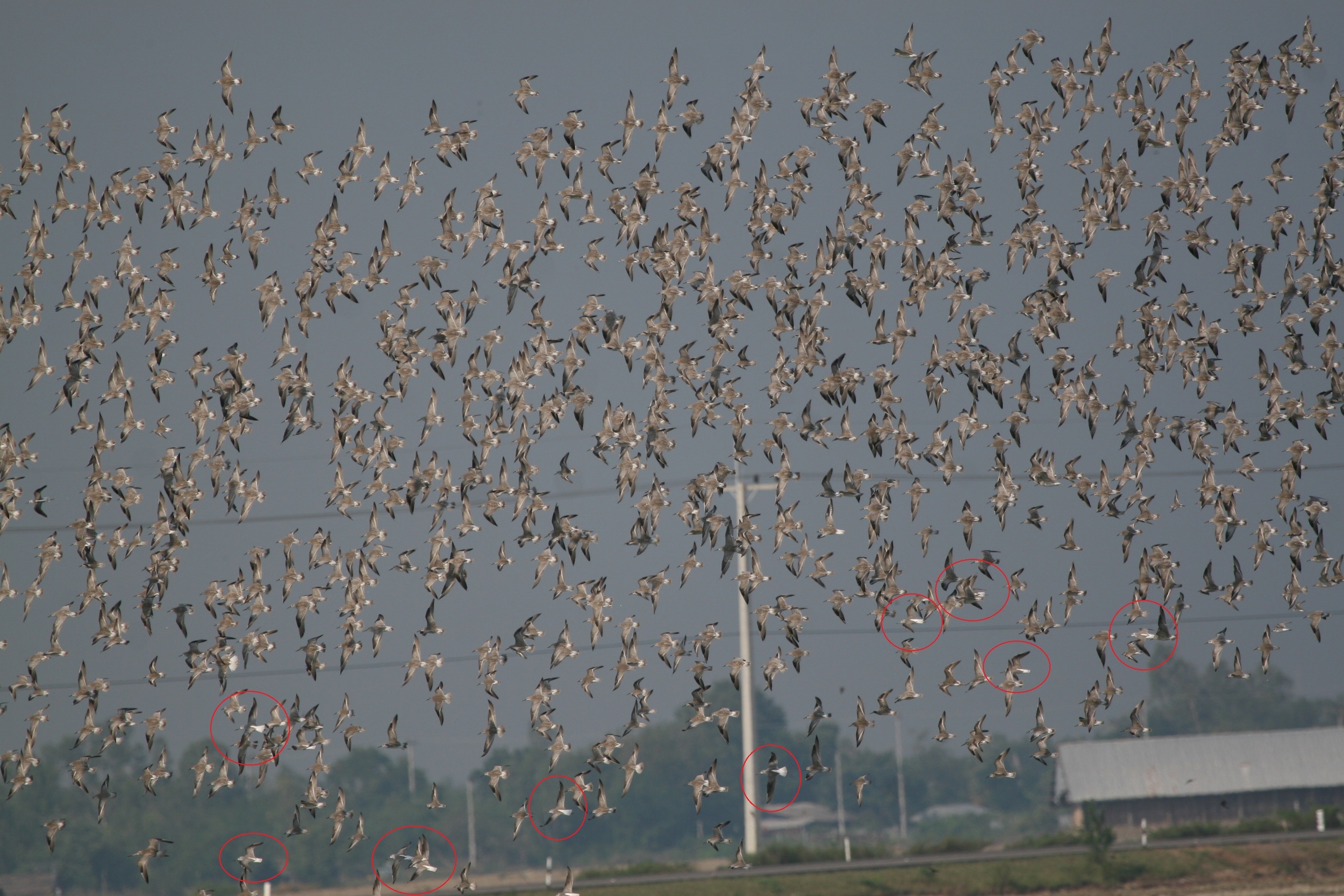
130 Greater Yellowlegs Tringa melanoleuca
Greater Yellowlegs can be very difficult to tell apart from Lesser because plumage and overall build are very similar. Fortunately Greater is noticeably larger if there is some size reference and on my trip to Lampa Wetlands north of Santiago I managed to see both for direct comparison.
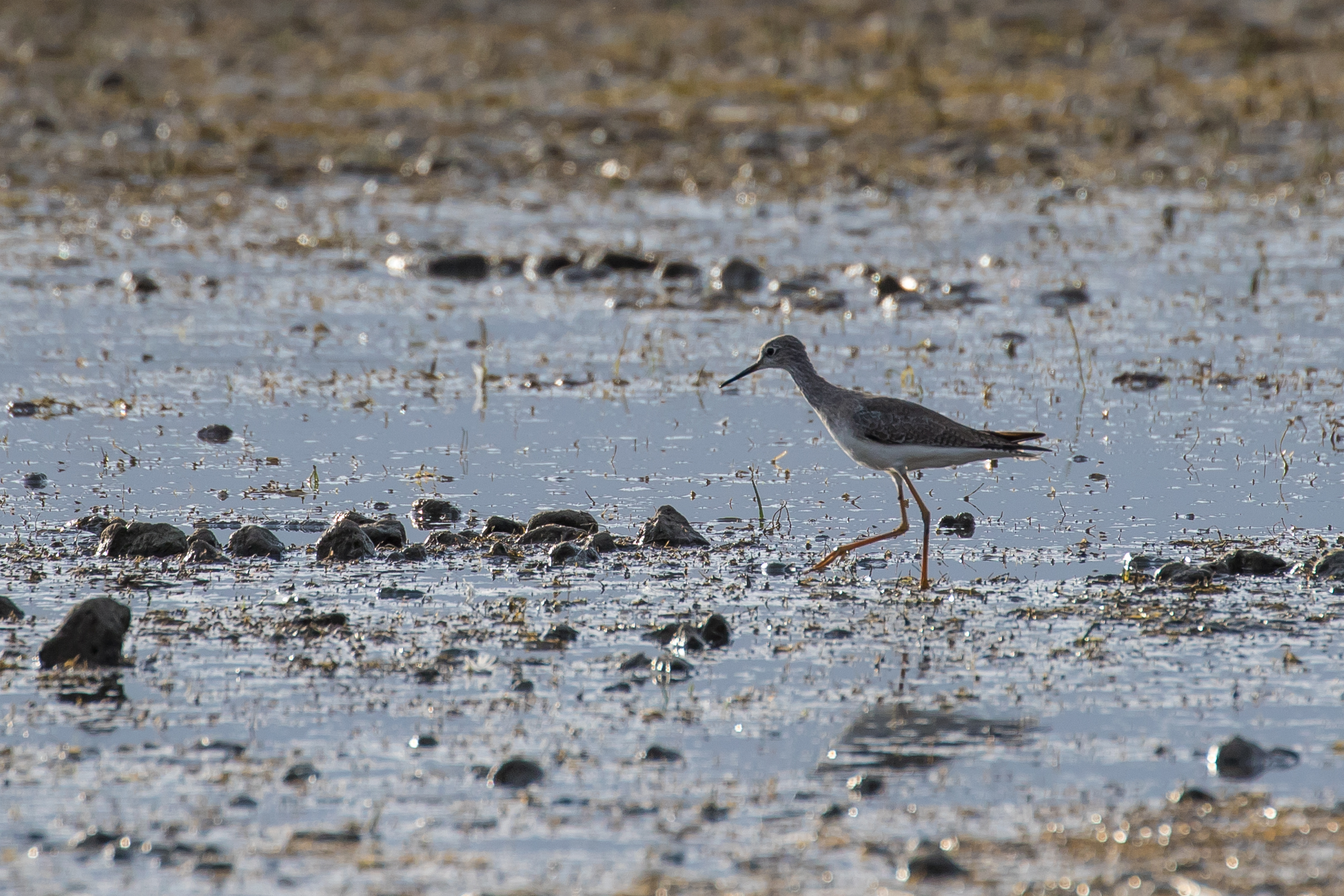
131 Crab-plover Dromas ardeola
Now we’re done with the Tringa (nothing against, them, all very nice, it just that they’re a bit suit-and-tie dull) we get to crank up the quality meter again. First up an entire family: Crab Plover is one of five monotypic waders (birds with no close relatives so they are in their own family), three of which I have seen, the other two being Plains-wanderer and Ibisbill. I therefore need Magellanic Plover and Egyptian Plover – trips to Patagonia and sub-Saharan Africa might have to be scheduled post covid, though I am unlikely to get the computer vision or robotics community to help out by holding a conference in either place!
I was aware that Crab-plover can be seen fairly regularly in Dubai, and considered a twitch in 2009 when the whole family stopped off for a long-haul-breaking rest, the first time we travelled on Emirates to Perth from UK. The timing and family commitments meant I couldn’t pull that off, but when my first overseas trip after moving to Australia in September 2012 was set to be a conference meeting back in Oxford, I decided to break my journey with a stopover to help with jet-lag. After a very early morning arrival into the airport and a morning visit ot the pivot fields, I was driving my rental car north to Khor-al-Beida near the city of Umm-al-Quwain, trundling along a sandy track as far as I dared in my 2wd to park at 25.524331N, 55.593016E. It was 40 degrees in the shade, so probably touching 50 on the sandy expanse leading to a tidal wetland as I trudged the final kilometre. The reason I was here at such an apparently stupid hour is that the birds are best seen as the incoming high tide pushes them up to these accessible spots, and high tide was to be at midday. First up I found my lifer Terek Sandpiper, but continued to scan until I found some Black-and-white birds that were chunkier and bigger than the numerous Black-winged Stilts. Several Crab-plover were pottering about on the edge of the rising water and I had bagged my #1 target for the stopover.
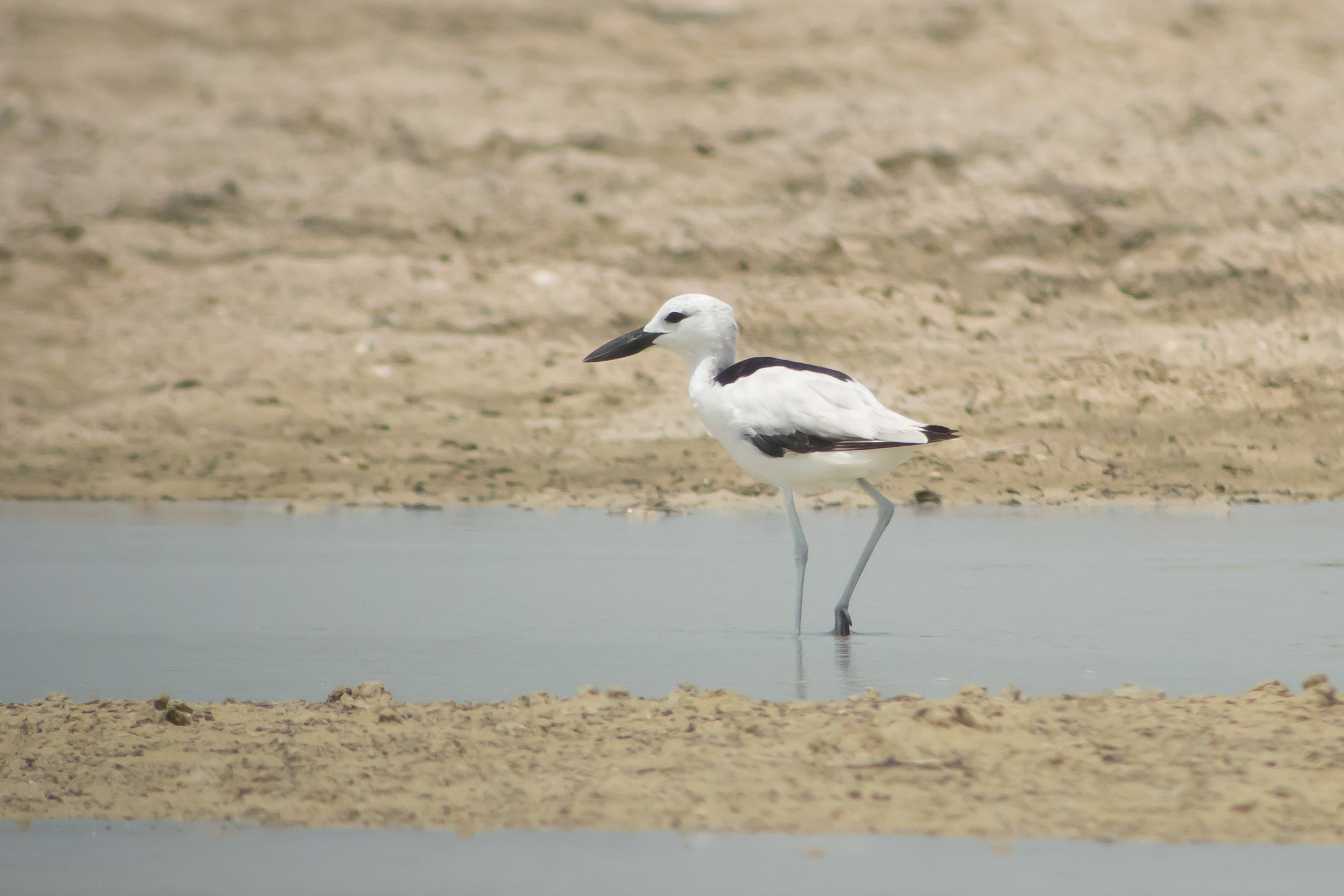
132 Cream-colored Courser Cursorius cursor
A real stunner of a bird and one of the more remarkable twitches I ever did, and also one of the largest. I fact it was my last in the UK, almost exactly 8 years ago as I write this. Incredibly a young Cream-coloured Courser had shown up on a Herefordshire golf course (golf courser? #dadjoke) close to the Welsh border. It was found on the Sunday and my pictures are taken on the 21st, a Monday, so I must’ve been able to clear the diary somehow. I reckon I picked up a rental car first thing on Monday and trundled cross-country the 2.5 hours to connect. When I arrived it was just off the course in bracken with sheep, but later moved to its favoured haunt the 8th fairway. It apparently stayed for 4-5 days and was seen by as many as 2000 twitchers! Seven weeks later I was I Morocco with Steve for a last-hurrah of Western Palearctic birding before emigrating and we had birds on the famous Tagdilt Track outside the village of Boumalne Dades on the edge of the Sahara, much more natural habitat for this stunning wader. But for the gallery I am sticking with my life-bird. I got better images that day in Herefordshire, but just for the surreality, imagine you are that golfer only a few metres form the bird with several hundred birders and maybe half a million pounds worth of optics trained on you…
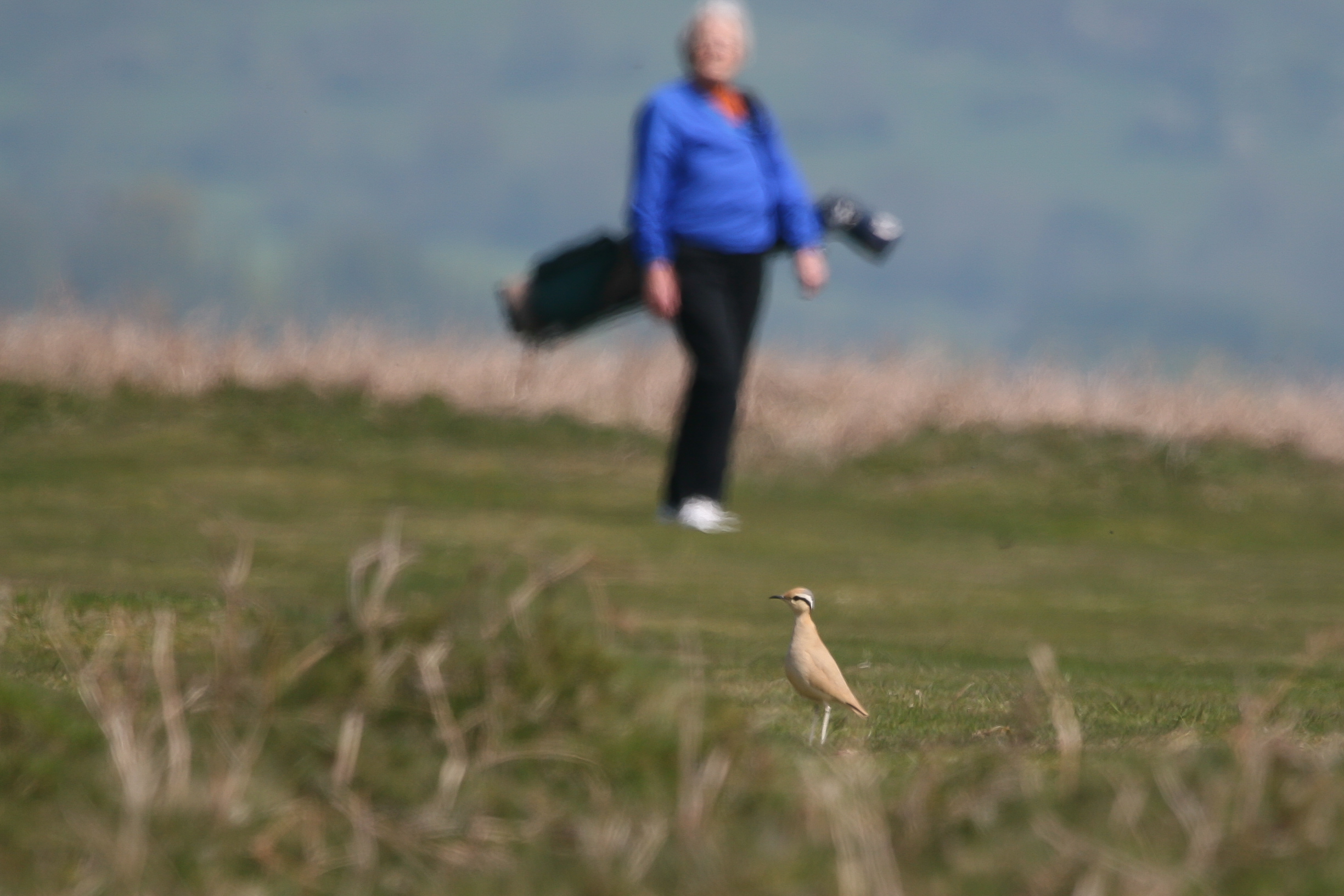
Actually, f-it, here’s a better image.
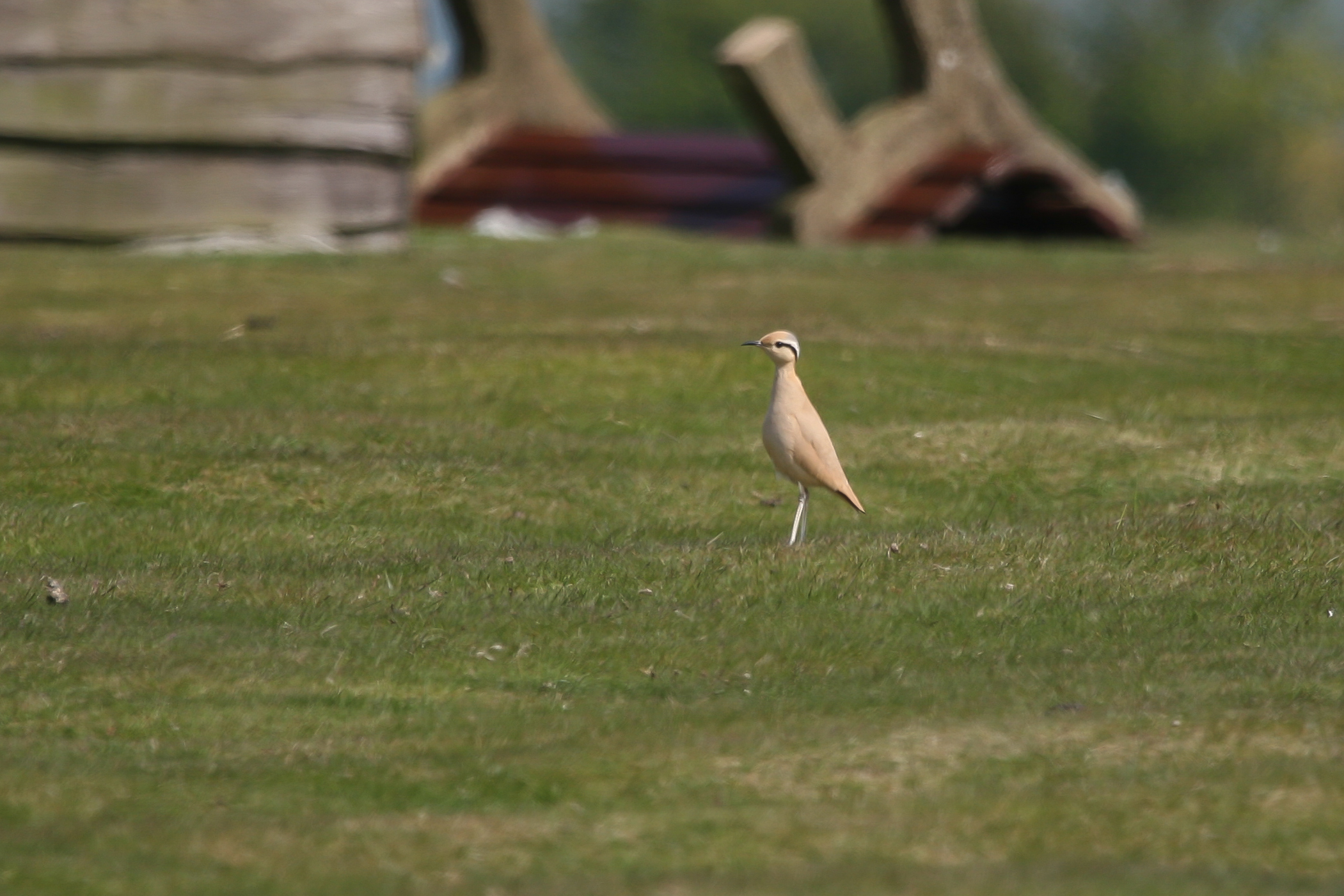
133 Australian Pratincole Stiltia Isabella
Pratincoles have a special place in my heart, and not just because they are very attractive and interesting waders that are more like terns in flight, graceful and agile. You will need to read on to the next species, Collared Prat’ to find out whyt they are special to me, but first I need to deal with one of Australia’s finest waders, Australian Pratincole.
Australian pratincole is even more upright and “courser-like” than the others, and my experiences with them have all been in memorable circumstances, so you might just get subjected to all three of the key encounters.
My first ever Australian Pratincole came in totally bizarre circumstances. We were heading through security at Jackson’s Airport in Port Moresby, 2008, when we noticed one of the x-ray checkers holding a bird. WTF?!?. Why was this dude holding a bird and what on earth was it? We struggled to place what this medium-size brown bird in his hands could be, until Steve exclaimed – “It’s a fucking Pratincole!”. The guy told he had caught it on the runway and was going to take it home as a pet. Thinking way faster than me, Steve realised this was a death-sentence for an insectivorous, migratory wader, and promptly produced a US$5 bill from his wallet and bought the bird! His first act as “owner” was to release it onto the runway, where it appropriately “ran away“ and Steve’s and my second act was to scribe it onto our life lists! As we walked across the tarmac to our flight to Alotau we saw others scuttling about, and these were a regular feature of our numerous trips in and out of the capital over the next month.
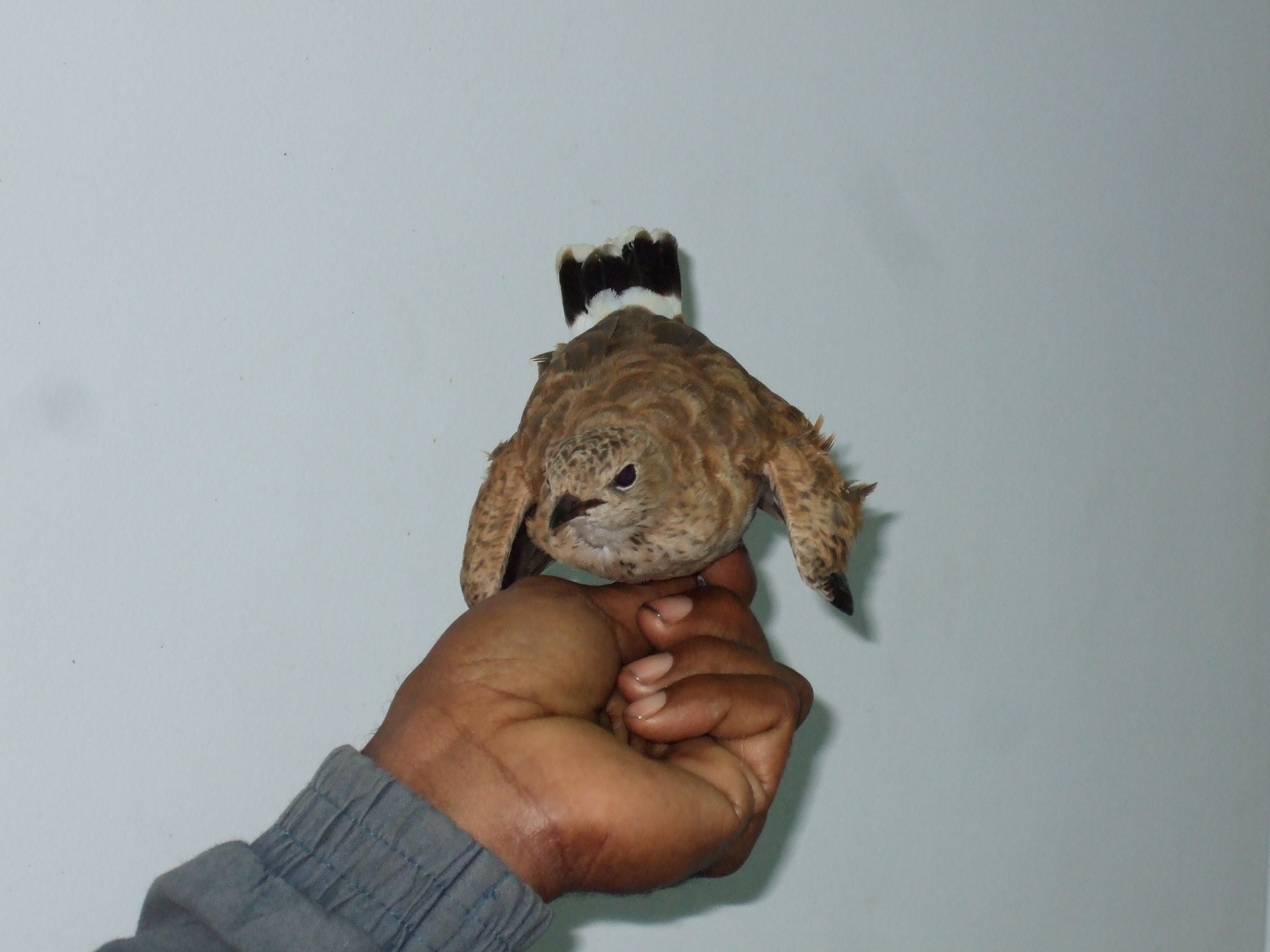
My next came on an afternoon/evening that I have already described. The PNG birds had been overwintering and in slightly drabber plumage, but in December on the Hay Plain, north of Deniliquin, I had my first breeding birds, sporting lovely red bill and chestnut breast. That particular day features in this blog five times – probably more than any other single day’s birding – because I also had my lifer Inland Dotterel, Banded Lapwing, Little Curlew, and of course Plains-wanderer in the same area on the same day. What a cast, and hard to top, hey!?!
Finally, included not for the views which were distant, but for a memorable evening in September 2017. Paul Coddington and I were on a short but potent trip up the Birdsville Track (blog here) and decided slightly naughtily, to camp at Pandiburra Bore. A man-made bore into the Great Artesian Basin spills out 80 degree water here and has formed a smallish but rich wetland in the desert. We were here in the wide-open spaces of the Australian outback — probably 100km from the nearest other humans — primarily for a couple of Birdsville specialties, Yellow Chat and Flock Bronzewing (we saw both). Distantly, but unmistakable, a couple of Australian Pratincoles, like brown terns, were hawking over the fringes of the pond for my SA tick.
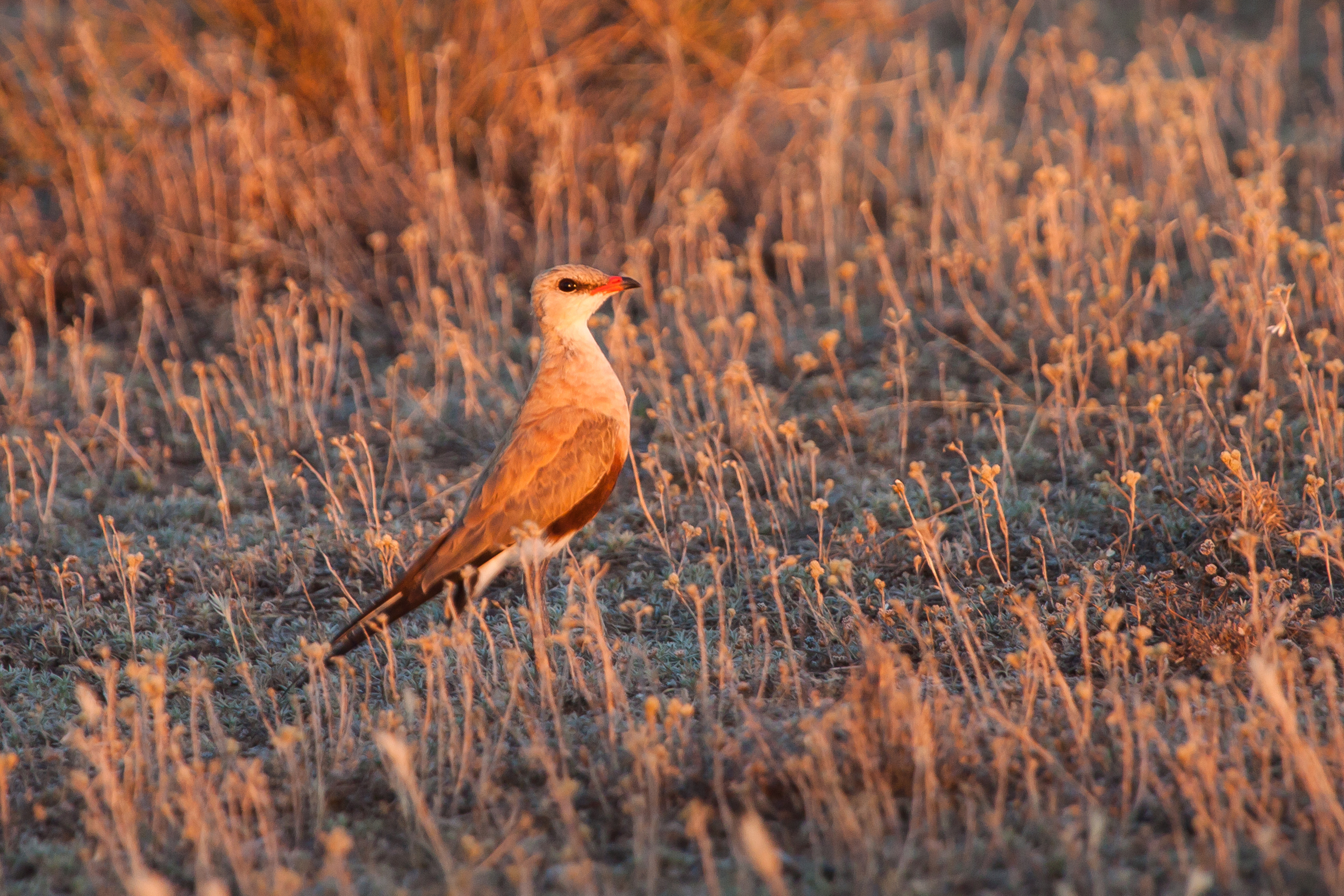
134 Collared Pratincole Glareola pratincola
If I date my British birding from that weekend in 1997 when, with Steve and Penny, I travelled around East Anglia seeing common and rare British birds, then Collared Pratincole was my first proper twitch. Mid-afternoon Monday after a cracking Saturday and Sunday (it was May bank holiday weekend) Penny called birdline to discover that a Collared Prat had been found at Burnham Norton, on the north Norfolk coast. At the time we were gradually making our way north past Norwich, having spent the previous evening with Steve’s school mate Popey and birding Minsmere and Southwold. We immediately went into twitch mode, Steve at the wheel, and Penny and I trying to navigate us optimally via A-Z and OS maps (it would be several years before either of us would have satnav). The tension rose as we made a couple “unforced errors” in navigation, but we arrived at the carpark in time to see two distinct crowds of 20-30 people about 1/2 a mile away who definitely were watching something. As we approached up the track various people returning confirmed the bird was still about, but when we got there some wanker announced, with barely disguised glee, that it had flown only 2 minutes previously. He will never know how close he came to losing his smirk and then his life, that evening on the wet meadows of Burnham Norton! Standing around with these people discussing what a great bird it was, and what marvellous views they’d had only darkened our mood, which only improved once they’d left and were replaced by disappointed bods who had just missed it like us. We waited around for a couple of hours and even drove back and forth along the coast in case it had been relocated but in the end had to call it quits to drove back to Oxford, some 3 hours away (and then another 3 for Steve and Penny to get back to Devon).
Having come so close, when I worked out that it was still present the following Friday, I decided it was worth a crack. Early the next morning I set off on a 6-hour round trip, back before 1pm after a 5am start, giving myself a couple of hours to track it down. Just about do-able. I did indeed see the Prat’ that day (much to Steve’s disgust) though completely missed a Bee-eater that flew over my head as I walked out to the stake-out. It was seen by birders already there looking for the Pratincole and they told me about it when I finally sauntered up to the viewing spot where they were gathered.
The following year a bird – quite possibly the same one – took up a brief residence at Summer Leys Nature Reserve outside Northampton. Steve came up and stayed with us for the night, ready for a dawn assault the next day and he was duly able to claw back the grip-off.
Subsequently I have seen Collared Pratincole in Spain on several occasions. Most recently was June 2012 when we had a week-long holiday in a villa not far from Seville. We were there at the same time as Cumnor walking buddy and sometime birder Reuben, who had a holiday house in the village of Hinojos just outside the Parque Natural de Donana, one of the most famous bird reserves in all of Western Europe. One evening we got the families together and Reubs and I took Erica and Hattie (our then 11-yearold daughters) out birding. One of the highlights of that evening was a fabulous Collared Pratincole that posed beautifully in the fading evening light by the track-side just a few km from Reuben’s gaff. The picture shows that bird.
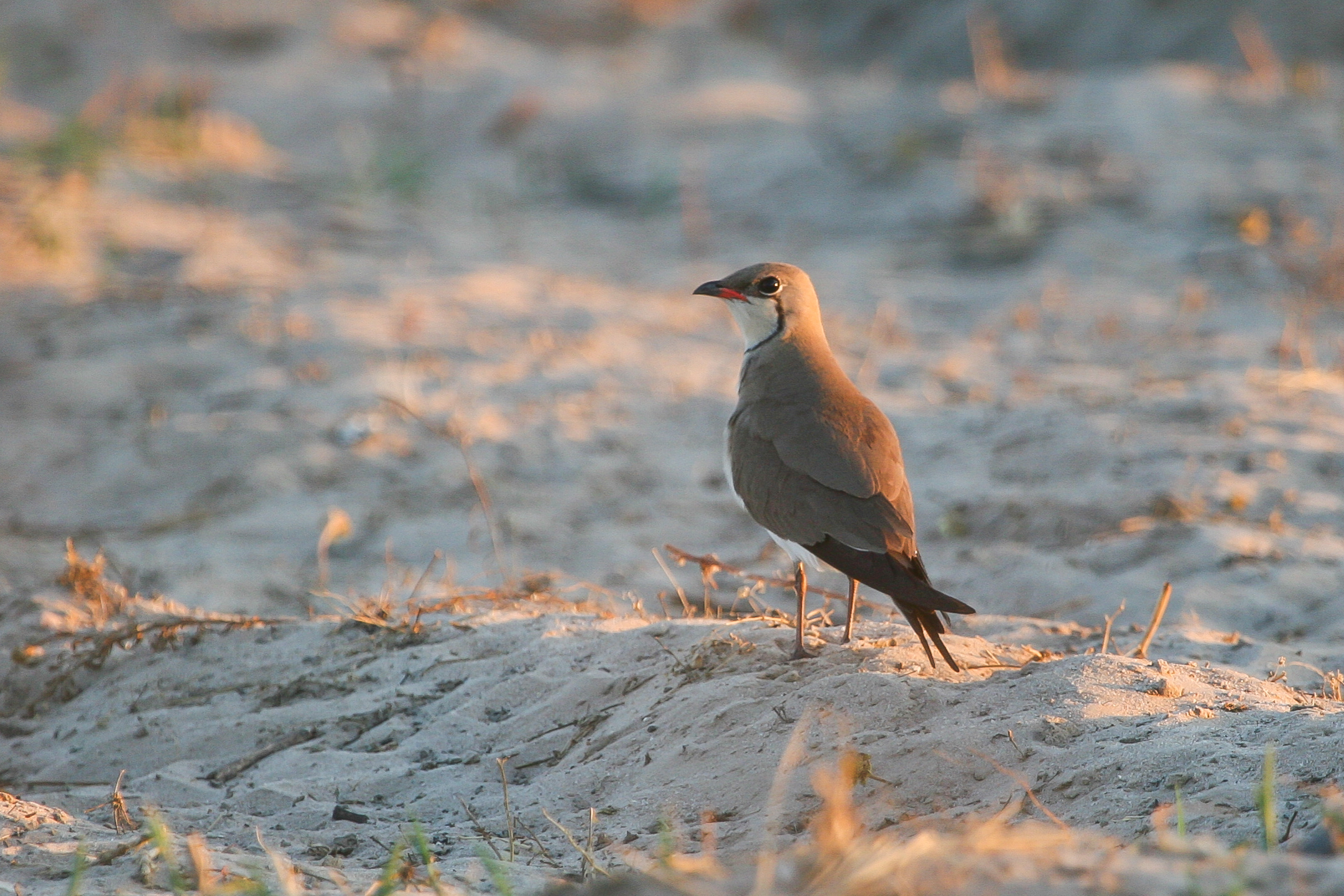
135 Oriental Pratincole Glareola maldivarum
And so I come to the end of my wader list. In the IOC list there are still some crackers that I need including Small Pratincole, a darling of a bird from India, and high on my top targets if I ever get back to the sub-continent.
My first Oriental Pratincole came on my Beijing conference trip in 2009, that later yielded Ibisbill! Late on the first evening, Robin (my guide) had taken me to a place called Wild Duck Lake, where we had some nice bitterns, Vinous-throated Parrotbill (my first of this special family) and I found a pair of Oriental Pratincoles, complete with chicks, close to the track-side. It was really quite dark by this stage so I took some nice digiscoped video but no photos. Back in Britain I twitched at Frampton Marsh in Lincolnshire in May 2010 to add it to my British list, and then in 2014 in Thailand, our guide took us to a spot where several had set up shop and we got some nice photos and wonderful views. I even added it to my Australian list in January 2018, when a pair was found at Tolderol by Colin Rogers, and they stayed around long enough for what seemed like the entire SA birding community to connect. The picture, by the way, is from Thailand.
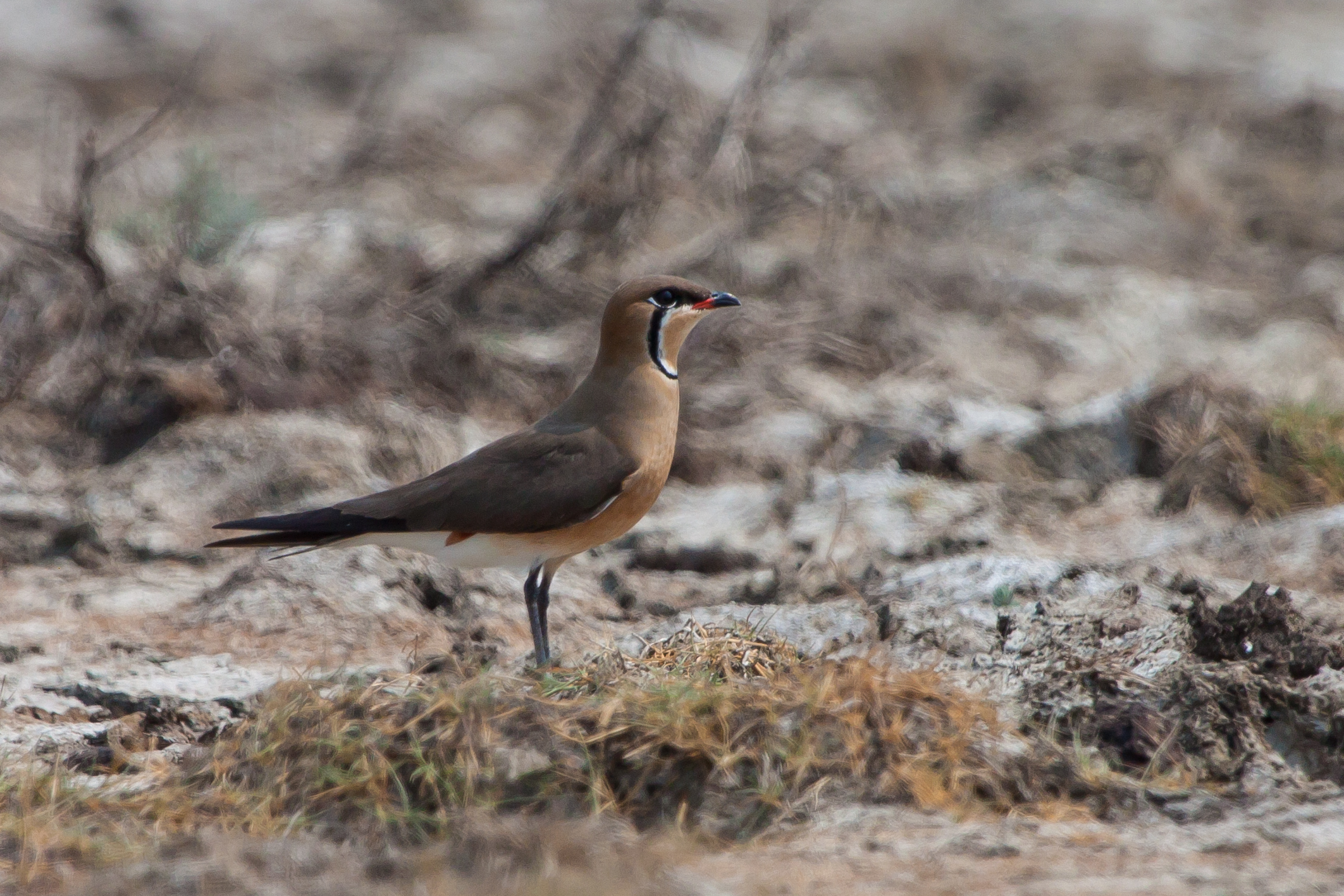
Porstscript: I’ve just run the numbers. Of the 135 I have seen, I have seen 78 species of wader on a work trip, and of those 78, 35 have been seen only on a conference or work trip.

